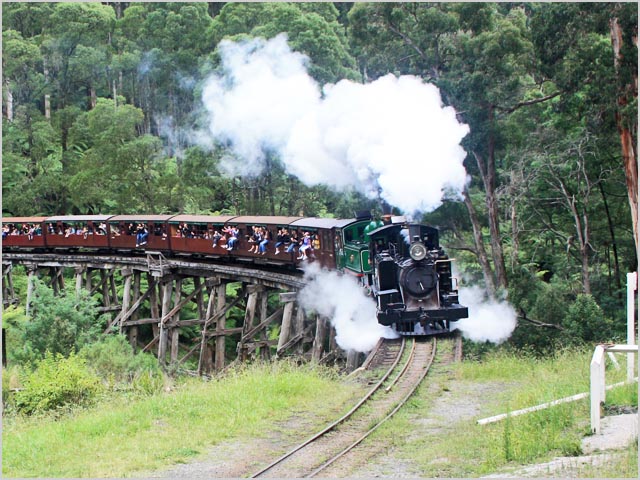
blog Think core banking platforms last a long time? Check out the gray hairs and wrinkles on the positively ancient insurance IT system which CGU is still running. This thing is so old it should be code-named ‘Methuselah’. In fact, we’d be very curious to know precisely what platform CGU is running it on at this point. iTNews tells us (we recommend you click here for the full article):
“Insurer CGU will look to replace its 32-year-old core policy maintenance system (PMS) in the coming year as it embarks on a new three-year growth plan. PMS was implemented in 1981 as an off-the-shelf package but has been modified significantly over the years.”
I really don’t think the term “off the shelf package” really had any relevance back in 1981 — at that point, surely, every platform in existence must have required some significant customisation to be able to fulfil its basic duties. Of course, PMS would have been a mainframe application, which is very likely partially the source of its extreme longevity. In every major financial institution in Australia, and many government departments, there are fairly up to date mainframes running ancient software which is still required for many purposes. Then the newer platforms are build on top of these archaic beasts and access and modify the underlying data when needed. According to those in the know, it’s a surprisingly efficient and cost-effective way to do things.
However, we’re sure CGU’s IT staff will be very happy to eventually lay PMS to rest for good. It can’t be easy maintaining a 32-year-old piece of software. We’re envisaging something like a dozen aged druids dancing in the moonlight around Stonehenge. Because when it comes to software that old, when things screw up, they can be very hard to fix.
Image credit: Timo Balk, royalty free

Things rarely screw up in software this old. Think of the accumulated debugging time!
Some perspective: PMS is 10 years older than Linux (first released in 1991) and as old as DOS 1.0. I can’t think of much other software that old that’d still be in use.
COBOL .. for the cloud.
http://paritynews.com/cloud/item/1073-ibm-takes-system-z-to-the-cloud-with-cobol-update
“…we’d be very curious to know precisely what platform CGU is running it on…” – an IBM Mainframe.
CGU aka IAG had 3 new mainframes still when I worked for them back in the very early 2k’s and still relied heavily on night time batch processing – they had a huge piece of middleware developed around IBM’s websphere and Tivoli MQ products with a Citrix delivered windows based front end. I was a small part of the project to deliver this system known as SCV (single customer view) and the project was a nightmare, even tho it eventually delivered a pretty good result for IAG.
It’s amazing how well the old systems do work tho – mainframes were predicted to be dead by now but actually made a bit of a resurgence in the last 10 years for financial institutions.
Makes you appreciate the quality control; none of this build, release, fix business; these guys got it right the first time.
wow. 32 years of PMS… and I thought my other half was bad!
I worked there until March this year – it’s Cobol code with VSAM database on IBM mainframe – and yes most processing is overnight (well – 6pm through to 6am) batch jobs, resulting in some business processes taking up to 48 hours.
The main problem is cost of environments – the new Java systems have up to a dozen environments (Dev, Continuous Integration, System Test, Integration Test, Performance Test, UAT, Pre-Production, Production) as the cost is minimal compared to PMS Mainframe environments – so they tend to have to share (or time share) environments (it was rare to have even a single dedicated environment for any one project!).
Also deploying new releases would take months – the new Java system replacing it doesn’t require deployments for most releases – they’ll simply be configuration (database) updates which can be deployed whilst the system remains live.
So the three decade jump in technology will improve business agility from months to minutes.
(for those wondering why is took 32 years – this is actually their 3rd or 4th attempt – the final hurdle was the finance systems – they lost the source code to one of them, so no one knew how it works… very expensive and difficult to reverse engineer the binary!)
At the Bank I work, its not the 1990s cobol code that the problem, its the VB5, VB6, COM+. dotnet 1.1, SQL 2000 thats choking us. The Cobol programmers still know their stuff, the Open systems guys are all Ruby on rails now and deny they ever programmed the VB.
Also Renai, the particular IT staff maintaining the PMS code wont be happy as they currently enjoy up to $2,000/day for their specialist skills (skills only 60-year-olds waiting for redundancy packages possess!). One of these staff won the Crown ‘Aussie Millions’ poker tournament in 2011… the day job isn’t as taxing as you may have been thinking!
Surely an ancient IT system whose acronym is “PMS” has resulted in more than a few derogatory jokes within CGU. Am I right?
Yep :-D
Comments are closed.